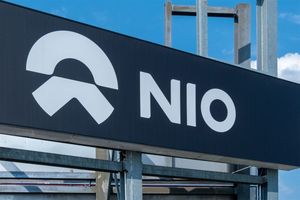
Apple (NASDAQ: AAPL) finds itself at a critical juncture, absorbing hundreds of millions in tariff-related costs each quarter and facing an escalating financial burden from ongoing US-China trade tensions. The technology behemoth reported absorbing approximately $800 million in tariff-related expenses in the third quarter of this year, with projections indicating a staggering $1.1 billion impact in the current quarter. This significant financial hit is directly squeezing the company's gross margins and forcing a radical re-evaluation of its long-standing global manufacturing and pricing strategies, signaling a profound shift for both the company and the broader tech industry.
The Costly Crossfire: Unpacking Apple's Tariff Burden
The financial pressure on Apple is a direct consequence of the escalating US-China trade tariffs, which originated in 2018 under the Trump administration. These tariffs were initially imposed to address concerns over trade imbalances, intellectual property theft, and forced technology transfers. More recently, they have expanded to include efforts to curb the flow of illicit fentanyl from China.
The timeline of tariff implementation has been characterized by cycles of escalation and temporary truces. Key moments include the imposition of 10-25% tariffs on hundreds of billions of dollars worth of Chinese goods starting in mid-2018, which gradually expanded to include many of Apple's critical products and components. While iPhones, iPads, and iMacs were sometimes initially exempted, subsequent tariff rounds or proposed levies, particularly in 2025, specifically targeted these core products and accessories like the Apple Watch, AirPods, Macs, and AirTags manufactured in China. Even products assembled in countries like Vietnam, such as AirPods and Apple Watches, have faced tariffs.
Both the US and Chinese governments have played active roles in this economic tug-of-war. The US has used tariffs as leverage to pressure China on trade practices and encourage manufacturing relocation, while China has retaliated with its own duties, considered antitrust investigations into Apple's App Store, and even discouraged government employees from using Apple products in favor of domestic alternatives like Huawei (SHE: 002502).
Apple, under CEO Tim Cook, has responded with a multi-pronged strategy. Initially, the company largely absorbed these tariff costs internally to maintain competitive pricing, as evidenced by Cook's confirmation that no price increases were passed directly to consumers for the June quarter's costs. However, this strategy comes at the expense of profit margins. For instance, Apple's (NASDAQ: AAPL) product gross margins declined to 34.5% in Q3 2025, a 140-basis-point drop from the prior quarter, directly influenced by tariff absorption. Analysts predict further margin pressure with the anticipated $1.1 billion impact in the current quarter, potentially reducing overall gross margins to 45%.
Beyond cost absorption, Apple has aggressively lobbied the US government for exemptions and, more significantly, accelerated a fundamental shift in its global supply chain. This involves diversifying manufacturing away from its heavy reliance on China towards new hubs like India and Vietnam. The initial market reaction to these tariffs was one of uncertainty and concern, with economists widely predicting higher inflation and potential price hikes for consumer electronics. Apple's shares have experienced volatility, and the broader industry has been compelled to reassess and restructure global supply chains.
A Shifting Sands: Who Wins and Who Loses?
The US-China trade tariffs, and Apple's strategic response, have created clear winners and losers across the global technology ecosystem, reshaping manufacturing landscapes and competitive dynamics.
The Winners:
Chief among the winners are the new manufacturing hubs emerging as alternatives to China. India has positioned itself as a significant beneficiary, attracting substantial investment from Apple and its contract manufacturers. Apple is reportedly in talks to move the assembly of all iPhones sold in the US to India as early as next year, aiming for India to produce 15-20% of its global iPhone output by the end of 2025 and 25% by 2027. This move is bolstered by Indian government incentives like the Production-Linked Incentive (PLI) scheme. Companies like Tata Group, which acquired a 60% stake in Pegatron's (TWSE: 4938) iPhone plant and Wistron's (TWSE: 3231) facility in India, are seeing substantial growth, with iPhone shipments to the US representing nearly 37% of Tata Electronics' FY25 revenue. Major contract manufacturers like Foxconn (TWSE: 2317) and Pegatron (TWSE: 4938) are also significantly expanding their operations and investments in India.
Vietnam is another key winner, becoming an increasingly vital manufacturing hub for Apple's non-iPhone products. By the end of 2025, Vietnam is projected to produce 20% of all iPads and Apple Watches, 5% of MacBooks, and 65% of AirPods. Foxconn (TWSE: 2317) and Pegatron (TWSE: 4938) are similarly building out capacity in Vietnam, joined by a growing number of other Apple suppliers.
Mexico is also emerging as a potential near-shoring destination for some Taiwanese electronics manufacturers, including Foxconn (TWSE: 2317) and Pegatron (TWSE: 4938), driven by the US-China trade war and the USMCA trade deal.
Indirectly, some competitors with less reliance on Chinese supply chains, such as Samsung (KRX: 005930), could gain a competitive advantage as Apple navigates these costly shifts. Even Google (NASDAQ: GOOGL), with its Pixel devices, is shifting manufacturing from Vietnam to India, reflecting a broader industry trend.
The Losers:
China faces a significant challenge to its long-held dominance as the "world's factory." While it remains crucial for component manufacturing, the accelerated shift of final assembly by Apple and other tech giants signals a potential decline in China's overall manufacturing share for global markets. This could lead to economic slowdowns and job losses in regions heavily dependent on Apple's supply chain. Reports even suggest Chinese authorities have created roadblocks for suppliers attempting to move operations.
Apple itself, in the short to medium term, is also a "loser" in terms of increased operational costs and complexities. Manufacturing iPhones in India is reportedly 5-8% more expensive than in China, and the diversification effort requires billions in investment. The challenge of replicating China's established ecosystem, infrastructure, and skilled workforce in new locations is immense and costly. Furthermore, continued tariff absorption pressures Apple's profit margins, and in its vital Chinese market, Apple (NASDAQ: AAPL) faces nationalist backlash and intensified competition from domestic brands like Huawei (SHE: 002502), Xiaomi (HKG: 1810), and Vivo.
Finally, Chinese supply chain partners that are unable or unwilling to diversify their operations outside of China or adapt to Apple's evolving strategies may experience reduced orders and a diminished role in the global supply chain.
Global Aftershocks: Broader Industry and Policy Implications
The US-China trade tariffs affecting Apple (NASDAQ: AAPL) are not an isolated event but a potent microcosm of broader industry trends and geopolitical shifts, reverberating across the entire global economy. This saga underscores a profound transformation in how multinational corporations operate and how governments wield economic power.
The most significant broader industry trend is the accelerated push for supply chain de-risking and diversification. For decades, companies embraced a lean, centralized manufacturing model, often heavily concentrated in China, for its efficiency and cost-effectiveness. The trade war, coupled with disruptions like the COVID-19 pandemic, exposed the fragility of this model. Apple's "China+1" strategy is now a blueprint for many other tech giants, indicating a permanent shift towards geographically dispersed production to hedge against regulatory risks, political uncertainty, and logistical vulnerabilities. While India and Vietnam are gaining, the challenges of scaling new ecosystems, ensuring quality, and developing local supplier bases are immense and will define the operational landscape for years.
These ripple effects extend throughout the tech sector. Competitors are watching Apple's moves closely; those like Samsung (KRX: 005930) with more diversified supply chains may gain market share, while others might accelerate their own shifts. Key contract manufacturers like Foxconn (TWSE: 2317) are expanding their global footprint, necessitating massive investments and strategic realignments. The broader tech industry faces increased costs from tariffs, which can squeeze profit margins and potentially lead to higher consumer prices for everything from laptops to gaming consoles. The economic uncertainty generated by trade tensions also dampens investment in innovation.
From a regulatory and policy perspective, the tariffs signify a rise in economic nationalism and protectionism. Governments are increasingly using tariffs as a tool to protect domestic industries, address trade imbalances, and even achieve geopolitical objectives. This has led to a fragmentation of global trade networks, with countries imposing retaliatory tariffs that complicate global manufacturing. The current US tariff structures, encompassing duties on goods from China, Taiwan, South Korea, Japan, and the European Union, illustrate a broader application of trade penalties beyond traditional disputes. This creates an environment of heightened regulatory scrutiny and political risk, forcing companies to navigate complex and often unpredictable trade policies. The concept of "friend-shoring"—moving supply chains to allied nations—is gaining traction as governments offer incentives, such as India's PLI scheme or the US CHIPS Act, to influence supply chain relocation.
Historically, this trade conflict echoes past economic dislocations. The "China shock" of the early 2000s, where China's entry into the WTO accelerated US manufacturing job losses, set the stage for current trade grievances. What began as a trade war has also undeniably evolved into a "technology war," with both the US and China vying for technological supremacy, particularly in critical sectors like semiconductors. US export controls on advanced AI chips, and China's efforts to build domestic chip production and restrict critical raw material exports, underscore a deeper, more strategic competition. This historical context suggests that the current tensions are not merely transient but represent a fundamental reordering of global economic and technological power.
The Road Ahead: What Comes Next for Apple
The path forward for Apple (NASDAQ: AAPL) amidst persistent US-China trade tariffs is one of strategic evolution, demanding careful navigation of both short-term financial pressures and long-term geopolitical shifts.
In the short term, Apple will continue to manage the direct financial burden of tariffs, which have approached $2 billion over two recent quarters. This largely involves internal cost absorption to protect its pricing strategy and market competitiveness, though this will inevitably pressure profit margins. Diplomatic engagement with governments to secure tariff exemptions will also remain a recurring tactic. Logistical adjustments, such as chartering cargo flights and building inventory, will serve to mitigate immediate disruptions.
The long-term future will be defined by Apple's commitment to its strategic pivots. Supply chain diversification is paramount. India is rapidly emerging as Apple's primary alternative manufacturing hub, with aggressive targets to produce 15-25% of global iPhone output there by 2027. This includes the assembly of new, high-end iPhone models shortly after their launch. Vietnam will continue to grow its role for other key products like iPads, Macs, Apple Watches, and AirPods. While these shifts enhance resilience, they come with substantial challenges: replicating China's scale, efficiency, and integrated supplier ecosystem is costly and time-consuming, requiring significant investment in infrastructure, workforce training, and quality control.
Increased localization of production, particularly in the United States, is also on Apple's agenda, driven by both geopolitical considerations and government incentives like the CHIPS Act. Investments of approximately $500 billion in US facilities, including manufacturing iPhone and Apple Watch cover glass in Kentucky, reflect this trend. However, full-scale iPhone manufacturing in the US remains largely unviable in the near term due to immense costs and a lack of specialized expertise, with estimates suggesting a US-made iPhone could cost upwards of $3,000.
Regarding pricing strategies, the long-term persistence of tariffs and higher diversification costs will likely compel Apple (NASDAQ: AAPL) to make adjustments. While explicit price hikes directly attributed to tariffs have been avoided, analysts anticipate potential moderate increases ($50-$100) on some iPhone models. Apple will carefully balance maintaining profit margins with the risk of impacting consumer demand.
Emerging market opportunities present a dual benefit for Apple. India, for instance, serves as both a critical manufacturing hub and a rapidly growing consumer market. Localized manufacturing has already positively impacted sales in India, making it a top revenue market for Apple. Conversely, challenges in China persist, with Apple facing intensified competition from domestic brands and potential government-backed shifts in consumer preference.
Potential scenarios and outcomes include a "new normal" of diversified production, where Apple successfully reduces its China dependency while managing higher operational costs and complexity. An escalated trade war scenario, however, could lead to more substantial price increases, significant supply chain disruptions, and greater volatility for Apple (NASDAQ: AAPL) stock. A scenario of managed coexistence, with more predictable but lingering tariffs, would see Apple continuing its measured diversification while striving to regain market share in China through innovation.
Conclusion: A New Era for Apple and Global Tech
The US-China trade tariffs have undeniably ushered in a new era for Apple (NASDAQ: AAPL) and the broader technology sector, fundamentally reshaping global manufacturing, supply chains, and market dynamics. The key takeaway is that the centralized, China-dependent manufacturing model, once an engine of efficiency, is now being strategically dismantled in favor of a more diversified, resilient, and geographically dispersed approach.
Apple's proactive response—absorbing billions in tariff costs while aggressively accelerating its "China Plus One" strategy in India and Vietnam, alongside targeted investments in US manufacturing—underscores the critical importance of supply chain resilience in today's geopolitical climate. While this transition is costly and complex, posing challenges in replicating China's established ecosystem, it is a strategic imperative for long-term stability and risk mitigation. The robust performance of Apple's high-margin Services division provides a crucial financial buffer, bolstering the company's ability to navigate these turbulent waters.
Moving forward, the market for Apple (NASDAQ: AAPL) will be characterized by its successful execution of this intricate supply chain overhaul. The shift will see iPhones increasingly sourced from India for the US market, and other products from Vietnam, while China remains a vital, albeit challenging, consumer market and source of critical components. For the broader tech industry, this signals a global recalibration, with other electronics manufacturers following suit, leading to a potentially fragmented tech ecosystem, intensified competition, and altered cost structures for consumers worldwide.
What investors should watch for in the coming months:
- Progress on Supply Chain Shifts: Detailed updates on the scaling and efficiency of Apple's production in India and Vietnam, including cost implications and timelines for achieving targeted output percentages.
- Pricing Strategy Evolution: Any explicit price adjustments on new product launches and how consumer demand reacts to these changes, indicating Apple's balancing act between margin preservation and market share.
- Geopolitical Developments: Close monitoring of US-China trade policy, particularly any tariff escalations or de-escalations following political events, and potential retaliatory measures from China.
- Gross Margins and Earnings Guidance: Scrutiny of Apple's quarterly earnings calls for specific insights into the financial impact of tariffs on its gross margins and future revenue forecasts.
- Competitive Dynamics: How rivals respond to Apple's strategic pivots and innovations, especially in key markets like China and emerging categories such as AI-enabled devices.
- Services Revenue Momentum: The continued strength and growth of Apple's Services segment, which remains a key indicator of the company's overall financial health and its capacity to absorb hardware-related pressures.
Ultimately, Apple's journey through the tariff landscape is more than just a financial headache; it's a testament to the profound shifts occurring in global trade and technology, shaping the next chapter for one of the world's most influential companies.





